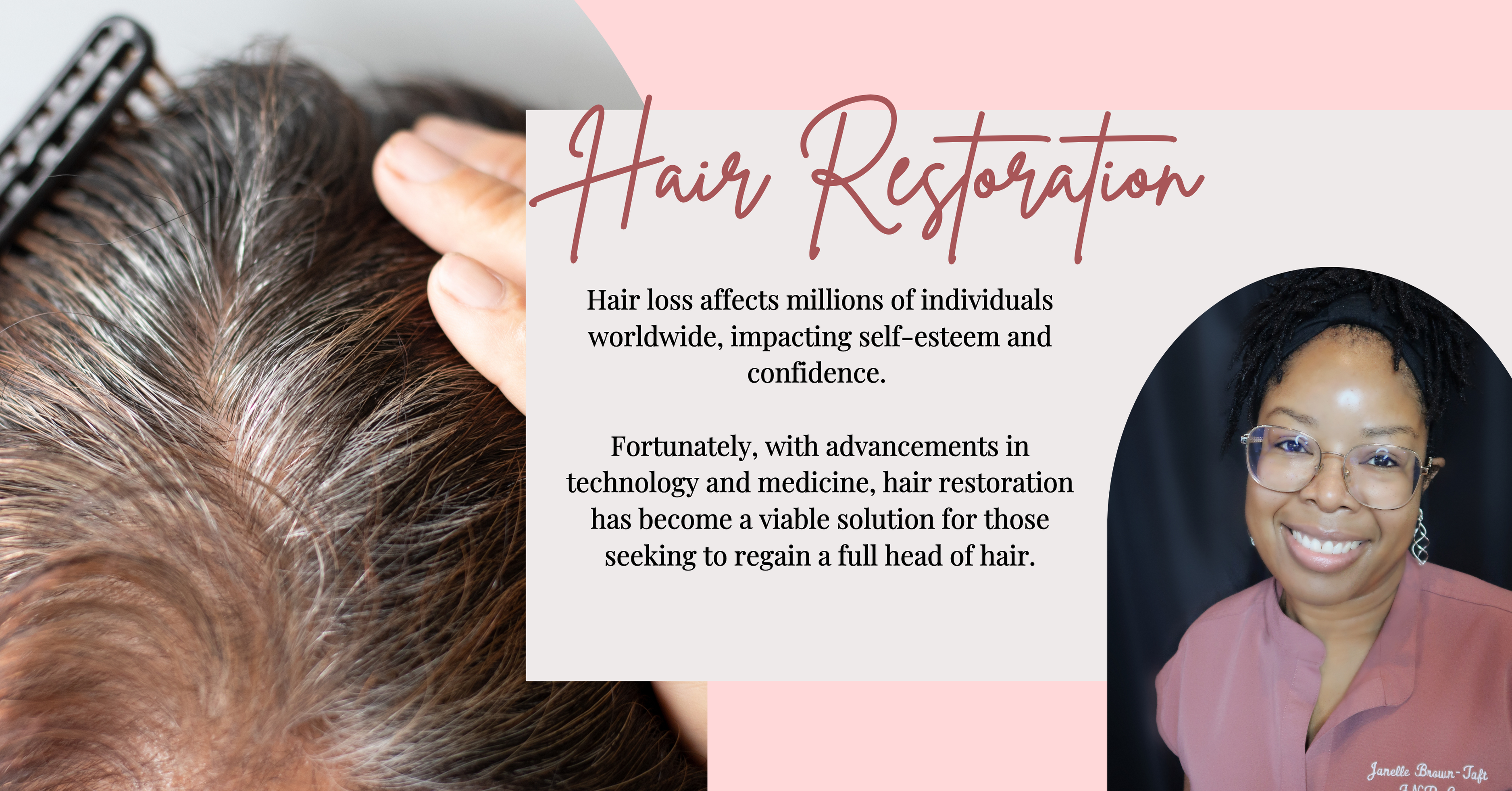Email:janelle.taft@taftaestheticsllc.com Call: 252-373-9466 110 Brentwood Center Ln.Wilson, NC 27896
|
|

| |
|
|

| |

There are several methods of hair restoration available today, ranging from non-invasive options like topical treatments and laser therapy to more advanced surgical procedures such as hair transplants. Topical treatments like minoxidil and finasteride can help stimulate hair growth and prevent further loss for those in the early stages of balding.
Laser therapy, on the other hand, utilizes low-level laser light to stimulate hair follicles, promoting growth and thickness. While these methods can be effective for some, they may not provide the desired results for those with more advanced hair loss.
At Taft aesthetics LLC we offer LaseMD and Keralase treatment and we also offer PRP Hair restoration.
Before opting for any hair restoration method, it is essential to consult with a qualified medical professional to determine the most suitable approach based on individual needs and goals. Additionally, understanding the potential risks, benefits, and costs associated with each treatment is crucial in making an informed decision.
Ultimately, whether you choose Keralase, Laser therapy, or PRP Hair Restoration, restoring your hair can have a transformative effect on your confidence and overall well-being. With the right treatment plan and the guidance of experts in the field, achieving a full and luscious head of hair is not only possible but also empowering.
